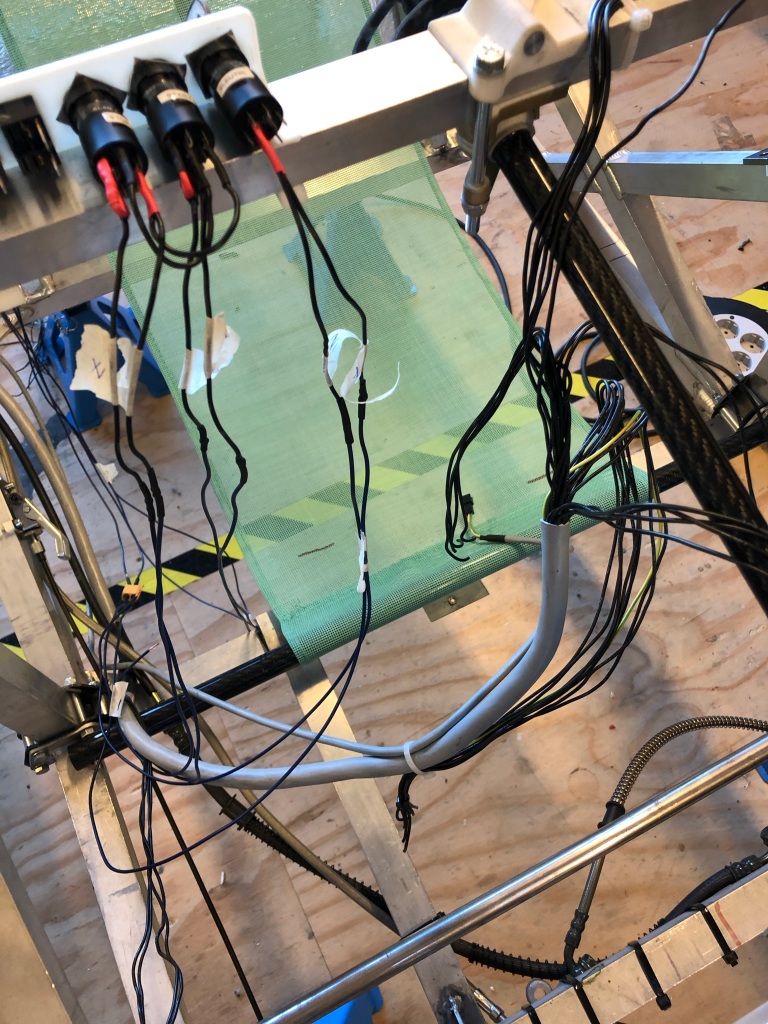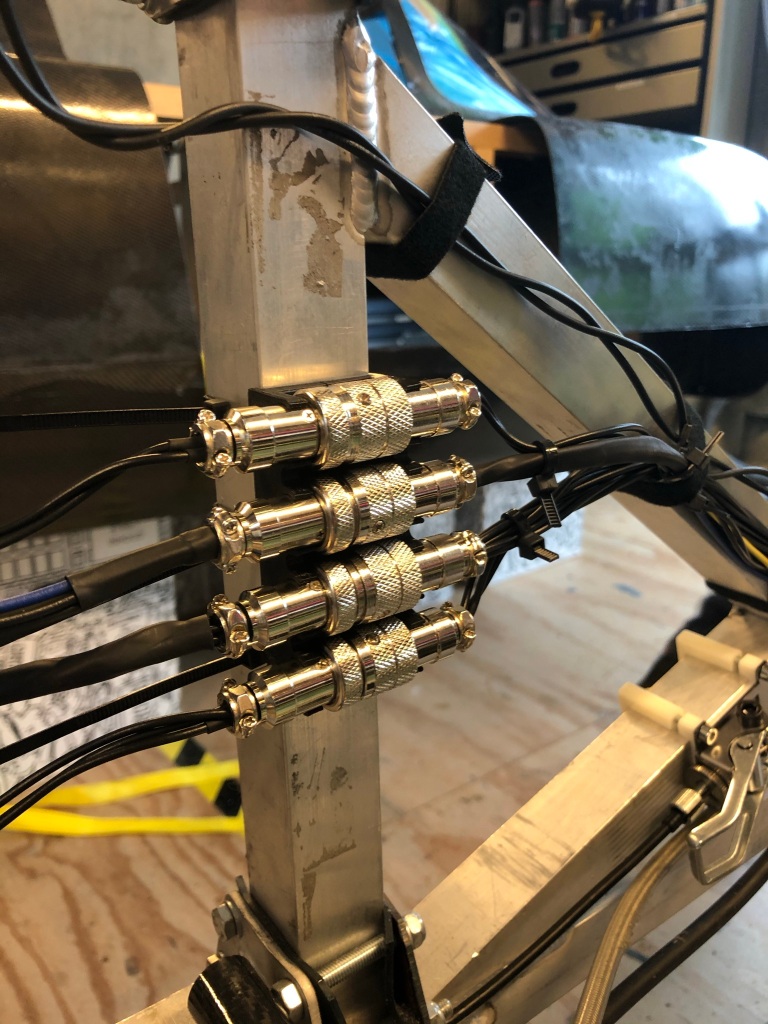It has been a long time since we gave you an update on the manufacturing process of the Bluefinger. Now that the car is almost finished, we have a lot to show you, so grab something to drink and enjoy the ride!
Because last year we were not able to finish the car and participate in the eco marathon due to covid-19, the car had not been driven for more than a year. So to see how capable the car really was, we prioritised getting the electronics to work, so we could plan a test ride as soon as possible.

Here you can see the messy electronics we had to deal with. In some cases a single wire was spliced together several times. And some things were not documented at all, so we decided to completely redesign the wire harness. We used a lot of connectors to make the system more repairable and futureproof

Here you can see an example of our new design philosophy. Each electronic system in the car has their own wire harness, which connect to the main harness at these points. This makes the system more repairable and futereproof. The connectors can be labeled, to quickly find the right connection. And don’t worry, you can not mess these up, because we have selected connectors that each have a different amount of pins, so there is only one way they go together.
While the electronics were sorted, the mechanical engineering students were busy with research on past designs to see what must, should and could be done. The carbon fiber rim project was started rightaway. The next fase in this project was to make some prototype rims using the detailed plans that were created last year. We had great support from Fiberneering, in supplying materials, disposables, workplace, oven and knowledge. Click on their name for more information, their method of using carbon fiber is something special!

This is the first part of the carbon wheel. This is the actual rim. These are made with a few layers prepreg carbon fiber. These prepreg sheets are carbon fiber with infused resin that will harden when heated. The material can be shaped around curves, which made this wheel possible. A vacuum bag gets installed after all layers are layed down. This way the carbon follows the outlines of the mold without air trapped inbetween.

After the rims are inspected, they get back in the mold, together with the foam insert we created last year. The wheel hub gets placed using a tool to ensure a concentric fit.

After all components are placed in the wheel, a layer of prepreg material gets layed on the foam and rim. A vacuum gets applied again to ensure proper contact and no imperfections.

But then… The vacuum applied was too strong, and the foam insert collapsed under the pressure. This happened in the oven, so we discovered it after the fact. This means the earlier produced rim and the aluminium wheel hub are fused together with the carbon fiber. This means they can not be salvaged and reused. And because we were already on a tight schedule, we decided to halt the work on these wheels and focus on parts that are more critical in the path of finishing the car.
So unfortunately we won’t have any carbon wheels on the car this year. But we surely have collected a lot of knowledge on this matter, so the team of next year will try again!
In the meantime, a lot of other small things need to be sorted in order to pass the technical inspection. Here are a few examples:

The steering wheel has been fitted with a LCD display. This screen will display important information, like speed and energy consumption.

The car has a new seat! For prototyping we used a piece of cloth from a broken beach chair. It worked, but didn’t have the looks and durability we wanted. De Vries sails Makkum has made this new one, with cutouts made for the safety harness. It is very sturdy, and won’t swing as much als the old one did. With the addition of a six point harness, the driver will be both safe and comfortable.

Because we designed the car with gullwing type doors, we need a way to keep them up, to make getting in and out of the vehicle possible. We thought of using gas struts for this application. The problem with these struts is that they keep applying their force, even when the door is closed. This causes stress on the bodyparts and will twist due to these forces. Therefore we designed our own strut, which is only locking the position in the most outward position. This does mean that the driver will need to push the door open. There is a simple switch to release the door back down. Because we don’t have to design with the constant force of a gas strut, we were able to use aluminium and 3d printed parts to keep the weight down.

The exterior has also had some changes made to it. First of all you can see the front lights. They consist of a 3d printed housing that gets glued in to the body. A custom pcb can be mounted onto this housing. Finally a plastic cover will ensure protection for the pcb and a proper ariflow.
If you look a bit closer you can spot the rear view mirrors. These have been supplied to us by Racemirrors a few years back. We are happy to finally use them, they are awesome for sure!
A few weeks back we were noticed by Shell that they won’t be able to deliver an event this year due to the restrictions around the pandamic. However, we will finish the car, and are trying to organanize our own personal event to test the car and see it finished. So we keep working on the car and will keep you updated on our plans!
